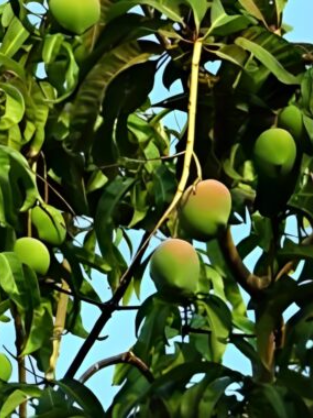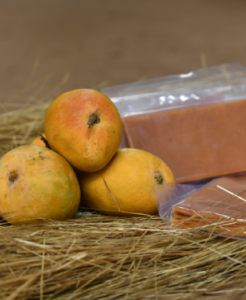Nutrients which are required by the plants for their normal growth and development and which are not replaceable in their function by any other nutrients are referred as essential. Seventeen plant elements have been recognised as being essential to all plants for their normal growth and development.
The essential Plant nutrient elements are Carbon (C), hydrogen (H) and oxygen (0) are derived from the air and water.
Nitrogen (N), phosphorus (P) and potassium (K) are used in large quantities by the plants and are called as major or “primary nutrients”.
Calcium (Ca), magnesium (Mg) and sulphur (S) are required in relatively smaller but in appreciable quantities and hence named “secondary nutrients”.
Iron (Fe), zinc. (Zn), manganese (Mn), copper (Cu), boron (B), molybdenum (Mo) chlorine (CD) and nickel (Ni) are needed in small quantities and are called as “micronutrients” or trace elements.
In addition to the above, some elements are required a particular group or species of plants. They are silicon (Si), cobalt (Co) sodium (Na) and vanadium (Va). Criteria of essentiality
In order to identify a type of nutrient as essential nutrient three criteria must be met ,
These criteria are the following:
1. A deficiency of an essential nutrient makes it impossible for the plant to complete the vegetative or reproductive stage of its life cycle.
2. Such deficiency is specific to the element in question and can be prevented or corrected only by supplying this element.
3. The element is involved directly in the nutrition of the plant quite apart from its possible effects in correcting some unfavourable microbiological or chemical condition of the soil or other culture medium.
Many individuals contributed to the discovery of the essentiality of elements in plant nutrition. Much of the early research focused on the beneficial effects or sometimes on the toxic effects of the elements. Generally, an element was accepted as a plant nutrient after the body of evidence suggested that the element was essential for plant growth and reproduction, leading to the assignment of certain times and
individuals to the discovery of its essentiality
| Element | Date of acceptance | Researcher |
|---|---|---|
| Nitrogen | 1804 | De Saussure |
| Phosphorus | 1839 | Sprengel |
| Potassium | 1839 | Sprengel |
| Calcium | 1839 | Sprengel |
| Magnesium | 1839 | Sprengel |
| Sulfur | 1851 | Salm-Horstmann |
| Iron | 1943 | Gris |
| Manganese | 1922 | McHargue |
| Copper | 1931 | Sommer, Lipman |
| Boron | 1923 | Warington |
| Zinc | 1931 | Sommer, Lipman |
| Molybdenum | 1939 | Arnon & Stout |
| Chlorine | 1954 | Broyer, Carlton, Johnson, |
| Nickel | 1987 | Brown, Welch, & Cary |
Classification of plant nutrients
There are numerous ways in which plant nutrients can be categorized.
Classification on the basis of quantity of nutrient required
1. Primary nutrients: Among macro nutrients, Nitrogen, Phosphorus and Potassium are known as primary nutrients which are required in a proper ratio for a successful crop.
Example: N.P.K – very crucial for alphonso mango flowering and Fruit formation.
2. Secondary nutrients: Next to primary nutrients, there are three elements such as Calcium, Magnesium and Sulphur which are known as secondary nutrients.
Example: Ca, Mg. S
3. Micro nutrients: These nutrients required by plants in small quantities and also known as minor or trace elements. These are seven in number.
Example: Fe, Mn, Zn, Cu, B. Mo, CI, Ni
Classification on the basis of mobility of nutrient in the soil
1. Mobile nutrients
The nutrients are highly soluble and these are not adsorbed on clay complexes.
2. Less mobile nutrients
They are soluble, but they are adsorbed on clay complex, so their mobility is
reduced.
Example: NH4+, K+, Ca2+, Mg2+, Cu2+
3. Immobile nutrients
Nutrient ions are highly reactive and get fixed in the soil.
Example: H₂PO4, HPO4 , Zn²+
C. Classification on the basis of mobility within the plant
1. Highly mobile: N, P and K
2. Moderately mobile: Zn
3. Less mobile: S, Fe, Mn, Cl, Mo and Cu
4. Immobile: Ca and B
D. Classification on the basis of functions in the plant
1. Elements that provide basic structure to plant. Example: Carbon, Hydrogen and Oxygen.
2. Elements useful in energy storage, transfer and bonding: These are accessory structural elements which are more active and vital for living tissues. Example: N, S and P.
3. Elements necessary for charge balance. Example: K, Ca and Mg.
4. Elements involved in enzyme activation and electron transfer. Example: Fe, Mn, Zn, Cu, B, Mo and Cl.













